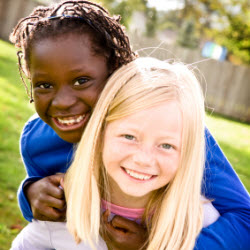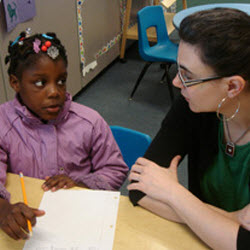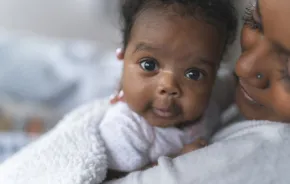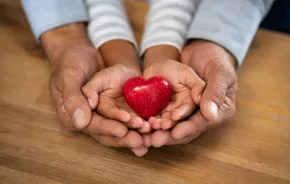On any given day there are 1,300 to 1,500 children in foster care in King County, and about 10,000 children in foster care across the state of Washington. These most vulnerable among us need our understanding and our help. The difference you can make to help a foster child have a childhood and future starts with awareness of the basic facts of foster care and an understanding of the needs and challenges of those touched by the issue.
On any given day there are 1,300 to 1,500 children in foster care in King County, and about 10,000 children in foster care across the state of Washington. These most vulnerable among us need our understanding and our help. The difference you can make to help a foster child have a childhood and future starts with awareness of the basic facts of foster care and an understanding of the needs and challenges of those touched by the issue.
Foster Care Facts
 Who are foster kids?
Who are foster kids?
Kids in foster care are just like any other child you know, but with one difference — they have all suffered trauma and loss through no fault of their own. They have the same needs, dreams, and unique potential as all children, and seek the same opportunities that all kids equally deserve to build a bright and promising future — for their own well-being, and to be responsible and contributing members of their community. Foster youth demonstrate incredible resilience as they navigate their experience in foster care.
Why do kids enter foster care?
Kids enter foster care because they have experienced severe abuse and/or neglect due to a crisis of parenting. Family stress factors such as poverty, substance abuse, incarceration, mental illness, and homelessness have forced the state to intervene in the lives of families to protect children from abusive and neglectful situations. In Washington State, approximately 65% of all youth enter the foster system because of neglect, while 35% enter because of physical and sexual abuse. Child abuse and neglect occurs in all cultural, ethnic, occupational, and socioeconomic groups.
Foster care is a temporary living arrangement for abused, neglected, and dependent children who need a safe place to live when their parents or another relative cannot take care of them. Often their families face issues such as illness, alcohol or drug addiction, or homelessness. Children are placed with licensed foster families, relatives, or in group care facilities while social workers and judges work with their families toward safe reunification or another permanent living situation.
How do kids enter the foster care system?
Once the court has decided that a child should be removed from his or her parent’s custody and placed in foster care, the birth parents and the child are assigned a social worker. Federal law requires that all children have a “permanency goal” — that is, there must be a clearly defined plan for the child to safely leave foster care. The initial goal for almost all children who enter the system is to eventually return to their birth parents’ care. Approximately 65% of children who enter foster care eventually return to their birth parents after they have completed necessary counseling and treatment.
When birth parents are unable or unwilling to make the life changes necessary to ensure they can safely care for their children, other permanent, alternative options are sought. These options usually include adoption, a guardianship with another family member or friend, or remaining in foster care until the age of 18. Each year in this country an estimated 28,000 youth “age out” of the foster care system, whether or not they are prepared to live on their own.
Foster care by the numbers:
- 28% of foster kids are in the foster care system for three or more years.
- 25% of foster youth switch homes five or more times before their 18th birthday.
- Nearly a quarter of foster youth are homeless within a year of leaving care.
What are some of the biggest challenges kids in foster care face?
 Life in foster care can be extraordinarily challenging and disruptive for kids and teens, emotionally and developmentally. Separated from their family, foster youth face tremendous obstacles in school and in life. Research shows that kids in foster care suffer from Post Traumatic Stress Disorder at a higher rate than returning combat war veterans, and more than half struggle with mental health challenges stemming from the trauma they’ve endured.
Life in foster care can be extraordinarily challenging and disruptive for kids and teens, emotionally and developmentally. Separated from their family, foster youth face tremendous obstacles in school and in life. Research shows that kids in foster care suffer from Post Traumatic Stress Disorder at a higher rate than returning combat war veterans, and more than half struggle with mental health challenges stemming from the trauma they’ve endured.
Academically, foster youth face an uphill battle due to changes in home placements and school transitions, lack of basic skills, and emotional upheaval. Access to important socialization opportunities — like music lessons and team sports — is limited, as is access to funding for essential needs that all kids equally need and deserve like clothing, shoes, school supplies, haircuts, and funding for school fees.
Foster youth have significantly higher rates of absenteeism at school than their peers, and with each school change, a foster child loses four to six months of academic progress. In terms of longer-term education objectives, foster youth are half as likely as their peers to enroll in college preparatory courses, even when they have similar test scores and grades.
The education challenge:
- 44% of foster kids who spend all four years of high school in care graduate from high school on time (as opposed to their peers, 80% of whom graduate on time).
- 65% of foster youth experience seven or more school changes.
- Foster youth fall behind their peers on every education measure in King County, including grades, test scores, and discipline.
- 24% of students in foster care are in special education.
- 70% of teens who age out of foster care say they want to attend college, but less than 3% achieve a bachelor degree.
Treehouse Youth Stories: Meet Diana
Diana understands the emotional scars that can be created by a life in the foster care system. Throughout her childhood, she bounced between countless homes and schools. When she finally found a family she felt a connection with, an administrative mix-up by her social worker caused another endless string of transitions, including time in a group home.
Despite these enormous obstacles, Diana always had a love for learning and was determined to graduate and earn a college degree. Finally, at age 18, she attended one school for the entire academic year. Fortuitously, she was connected to the Treehouse Coaching to College Program her senior year of high school, where she learned about the Fostering Scholars program at Seattle University. Started by a Treehouse donor and former Seattle University Trustee, the Fostering Scholars program provided a full-ride scholarship and wrap-around supports for foster care alumni. Diana applied, was accepted, and spent the next four years studying hard, volunteering at the Juvenile Detention Center, and working as a nanny.
With just a few credits left to go, Diana was able to walk with her class last spring. She expected to return to SU last summer to finish a couple of missing credits and embark on her new life as a college graduate. Then, in June, she was involved in a pedestrian accident where she was pinned between a vehicle and a commercial truck. The accident caused serious injury, and temporarily forced Diana into a wheelchair while she began the recovery process.
Words cannot express how moved we were this fall when, in the midst of her world being turned upside down, Diana managed to drop off a pile of back-to-school donations for Treehouse kids. Prior to the accident, she had spent an entire afternoon picking out the exact toys and books she wished she had when she was in foster care, like roller skates. She bought a copy of Hands are Not for Hitting, for the Wearhouse book nook, since it’s concept that “many foster kids are learning for the first time.” Diana even found a bike on Craig’s List, which she bought in exchange for the bike she remembers taking home from Treehouse as a foster teen. Diana was on a tight budget at the time, but found a way to stretch her graduation dollars to make a lasting impact. As she continues her recovery, Diana is also planning her next step in life — applying to law school and pursuing a career in child welfare law.
 |
About Treehouse Treehouse makes a difference in the lives of thousands of Washington foster kids by helping with school, fulfilling key material needs and paying for extras that are, for most kids, just a regular part of growing up. Learn more about Treehouse and the essential services and programs the organization provides for kids in foster care and how you can help give foster kids a childhood and a future. |
This article was compiled by Treehouse, referencing research provided by Children's Administration, Casey Family Studies, and WSIPP (Washington State Institute for Public Policy).











